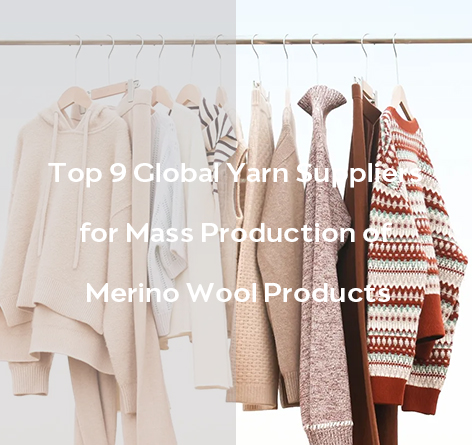Wool and cashmere have a long history and rich tradition as fiber materials. For thousands of years, humans have relied on wool and cashmere to meet a variety of needs, from cold clothing to luxury textiles, and they have played an integral role. Wool has a long history and has been a part of People’s Daily life since ancient civilizations. From the earliest woollen knitting to the later development of textile technology, wool has always been a precious resource for human civilization.
Cashmere, a more luxurious fibre, comes mainly from certain breeds of mountain sheep. The softness and warmth of this fiber make it the material of choice for high-end fashion brands and delicate crafts. Cashmere is unique in that it is rare, with only a few breeds of mountain sheep able to produce high quality cashmere fibers. Therefore, cashmere has a very prominent position in the global fiber market and is often considered a symbol of aristocratic taste and luxurious life.
Cultural Value of wool
Wool has a long history as a natural fiber, and its origin can be traced back to ancient times. Humans discovered the thermal insulation properties of wool in the early days and began to use it to make clothing, which marked the early application of wool in human culture. The warm and soft nature of wool fibers has made it an integral part of every culture.
In ancient cultures, wool was often used to make traditional clothing. In the high mountains of Europe, for example, wool was ideal for making sweaters and shawls that could withstand the cold. In the Middle East and Asia, wool is used to weave carpets, which are often seen as treasured family heritages. In Africa, wool is also the main material for making many kinds of clothing and ornaments, reflecting the uniqueness of various regional cultures.
In addition to its usefulness, wool also plays an important role in literature, art and religious rituals. In many literary works, wool is often used to symbolize warmth, comfort and family connection. In the artwork, painters present rich cultural connotations by depicting wool textures and colors. In religious ceremonies, some cultures regard wool as a sacred symbol and are used to make sacrifices and ceremonial articles.
The role of wool in culture does not stop at clothing and goods, it also plays a unique role in arts and crafts. In the traditional crafts of many cultures, wool fibers are used to make a variety of handicrafts, such as weaving, embroidery, and felting.
The fibrous structure of wool gives it a unique texture, making it an ideal material for painting and sculpture. Some artists choose to work with wool, expressing cultural, historical and emotional complexity through its natural color and texture.
In handicrafts, wool is also used in a variety of ways. Felt products, such as felt hats and boots, are traditional representatives of wool crafts. Wool fibers are also often used in embroidery and weaving, showing the cultural characteristics of different regions. These handicrafts are not only practical, but also inherit cultural traditions and skills.
The sustainability of wool makes it more important in today’s environmentally conscious era. Compared to synthetic fibers, wool is a natural, renewable resource. Sheep obtain food during grazing and produce wool, which is more environmentally friendly than other fiber manufacturing processes.
In addition, wool has good biodegradability. At the end of the life of the wool product, its fibers can be naturally decomposed without causing lasting pollution to the environment. This sustainability makes choosing wool a choice that drives sustainable fashion and lifestyle.
In general, wool is not only a fiber material, but also a representative of cultural tradition, artistic creation and sustainable development. Its application in various aspects has contributed a rich and colorful cultural connotation, making it a worthwhile goal to inject deep connotation into the brand of wool.
The uniqueness of cashmere
Cashmere, as an extremely rare fiber, comes from specific sheep species living in the mountains, of which the Mongolian sheep and Tibetan antelope produced cashmere is the most valuable. These special environmental conditions and feeding methods make the production of cashmere relatively limited, thus giving it a unique rarity. Its extremely fine fiber diameter and excellent thermal properties make cashmere one of the representatives of top luxury goods.
The luxurious quality of cashmere is not only reflected in its touch, but also reflected in its excellent warmth and light and soft texture. This makes cashmere the material of choice for fine down jackets, sweaters and scarves. The superior quality of the cashmere fiber provides the wearer with a superior feeling of warmth, while the lightness of the touch also makes for an extremely comfortable and luxurious experience.
For brands, choosing to use cashmere as a material is not only about providing superior product quality, but also a strategic choice in building brand image and values. As a luxury material, cashmere can give the brand a high-end, refined and pursuit of excellence image.
Wool and cashmere in brand application
When choosing wool and cashmere, traditional brands not only pay attention to their superior quality, but also deeply reflect the cultural depth of the brand through these natural materials. First, traditional brands tend to be extremely careful in their selection of materials, choosing wool and cashmere with a deep traditional background. These fleeces may come from a particular breed in a particular region, with a unique fibrous texture and color, and carry the essence of the local culture.
Secondly, traditional brands pay attention to the inheritance and innovation of the traditional process of wool and cashmere. This includes a range of production processes, from shearing to fine processing, with rich cultural elements embedded in each step. By retaining traditional production methods, these brands give their products a unique artisanal quality, incorporating cultural traditions into modern design.
In addition, traditional brands often work with local artisans to inject wool and cashmere into their products through traditional textile and weaving techniques. This cooperation not only preserves the tradition of local craftsmanship, but also makes each product a work of art, conveying the brand’s profound cultural connotation.
Emerging brands often focus on breaking with tradition when choosing wool and cashmere, injecting a fresh and unique atmosphere into the brand through unique design and innovative use. First, these brands may choose wool and cashmere from different regions, by mixing and matching fibers from different origins to create unique textures and colors, highlighting the multicultural nature of the brand.
Second, emerging brands tend to inject more modern elements into their designs, making wool and cashmere a symbol of fashion through avant-garde tailoring, unique patterns and novel design concepts. Such a design not only attracts young consumers, but also gives the brand a forward-looking and innovative.
In addition, emerging brands may adopt sustainable and environmentally friendly production methods, emphasizing the uniqueness of products and unique feel. By working with designers, these brands are incorporating wool and cashmere into a wider range of fashion styles, giving these natural fibers a new lease of life in fashion.




